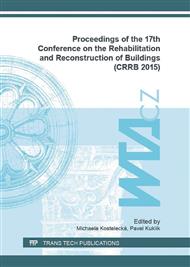p.137
p.143
p.148
p.152
p.159
p.165
p.171
p.179
p.186
Experimental Determination of Concrete Resistance of Various Composition to Water and De-Icing Chemicals
Abstract:
The focus of the project GAČR 13-18870S is the research in concrete durability determined primarily by its surface layer quality. The surface layer can be difficult to assess for which reason the project makes use of available standardised and non-standardised test methods by means of which the concrete surface layer or its internal structure can be examined. One of these methods which is commonly used is Determination of resistance of cement concrete surface to water and defrosting chemicals. The paper presents the results of experiments performed with concretes differing only in w/c ratio and plasticiser content. Two more methods were used during the research based on the action of a thawing solution upon the surface of the specimen during freezing and thawing. The only difference between these methods is the direction in which the thawing agent acts on the test surface. The presumed experiment outcome was the existence of a strong dependence of the outcomes of the methods on the w/c ratio. The performed analyses confirmed the experiment presumption.
Info:
Periodical:
Pages:
159-164
Citation:
Online since:
September 2016
Price:
Сopyright:
© 2016 Trans Tech Publications Ltd. All Rights Reserved
Share:
Citation:


